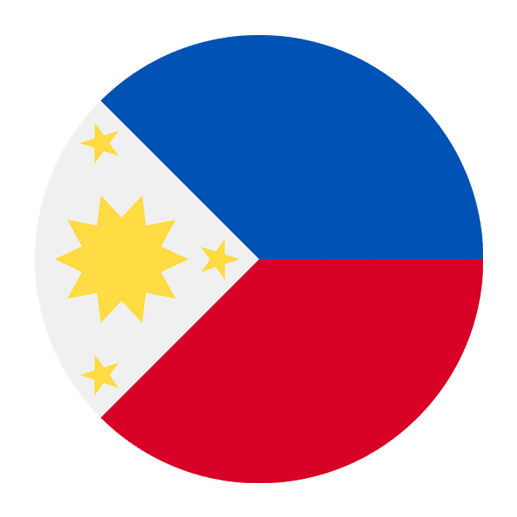In an increasingly globalized world, the ability to communicate across different languages is an invaluable skill, especially for professionals in technical fields such as engineering. As the Philippines continues to develop its infrastructure and technological capabilities, there is a growing need for engineers to understand and communicate in Tagalog, the national language. This article aims to provide a comprehensive guide to essential technical terms and vocabulary in Tagalog for engineers, enabling more effective communication and collaboration with Filipino colleagues and stakeholders.
Understanding the Basics
Before diving into technical terms, it’s crucial to grasp some fundamental aspects of Tagalog. Tagalog, also known as Filipino, is the national language of the Philippines and is spoken by millions of people across the country. It is an Austronesian language that shares some similarities with Malay, Indonesian, and other languages in Southeast Asia.
Pronunciation and Sentence Structure
Tagalog pronunciation is relatively straightforward for English speakers, but there are a few key differences:
1. **Vowels**: Tagalog has five vowel sounds: A (ah), E (eh), I (ee), O (oh), U (oo). These are generally pronounced as they are in Spanish.
2. **Consonants**: Most consonants are pronounced similarly to English, though there are a few exceptions. For example, the letter “R” is rolled or trilled.
3. **Stress**: Stress in Tagalog words can change the meaning of the word. For instance, “báhay” (house) versus “baháy” (to flood).
Tagalog sentence structure generally follows a Verb-Subject-Object (VSO) order, although Subject-Verb-Object (SVO) is also common.
Technical Terms in Tagalog
Now, let’s delve into some specific technical terms and vocabulary that engineers will find useful. These terms are categorized into various engineering disciplines for better organization.
General Engineering Terms
– **Engineer** – Inhinyero (male), Inhinyera (female)
– **Engineering** – Inhinyeriya
– **Technology** – Teknolohiya
– **Design** – Disenyo
– **Project** – Proyekto
– **Safety** – Kaligtasan
– **Quality** – Kalidad
– **Efficiency** – Bisa
– **Construction** – Konstruksyon
– **Innovation** – Inobasyon
Civil Engineering
– **Bridge** – Tulay
– **Road** – Kalsada
– **Building** – Gusali
– **Foundation** – Pundasyon
– **Survey** – Pagsusuri
– **Cement** – Semento
– **Concrete** – Konkreto
– **Steel** – Bakal
– **Load** – Karga
– **Beam** – Sinag
– **Column** – Haligi
– **Blueprint** – Plano
Mechanical Engineering
– **Machine** – Makina
– **Engine** – Makina (engine specifically can also be “makinang pang makina”)
– **Gear** – Engranaje
– **Bolt** – Turnilyo
– **Bearing** – Bearing (often borrowed directly from English)
– **Lubrication** – Pagpapadulas
– **Pump** – Bomba
– **Valve** – Balbula
– **Torque** – Torque (often borrowed directly from English)
– **Efficiency** – Bisa
– **Maintenance** – Pagpapanatili
Electrical Engineering
– **Electricity** – Kuryente
– **Circuit** – Sirkito
– **Voltage** – Boltahe
– **Current** – Kasalukuyang kuryente
– **Resistance** – Resistensya
– **Capacitor** – Kapasitor
– **Inductor** – Induktor
– **Transformer** – Transformer (often borrowed directly from English)
– **Generator** – Generator (often borrowed directly from English)
– **Wiring** – Pagkakawing
– **Insulation** – Insulasyon
Computer Engineering
– **Computer** – Kompyuter
– **Software** – Software (often borrowed directly from English)
– **Hardware** – Hardware (often borrowed directly from English)
– **Network** – Network (often borrowed directly from English)
– **Database** – Database (often borrowed directly from English)
– **Algorithm** – Algoritmo
– **Programming** – Pagprograma
– **Code** – Kodigo
– **Binary** – Binary (often borrowed directly from English)
– **Server** – Server (often borrowed directly from English)
– **Protocol** – Protokol
Environmental Engineering
– **Environment** – Kapaligiran
– **Sustainability** – Pagpapanatili
– **Waste** – Basura
– **Recycling** – Pagre-recycle
– **Pollution** – Polusyon
– **Ecosystem** – Ekosistema
– **Conservation** – Konserbasyon
– **Renewable** – Nababagong
– **Energy** – Enerhiya
– **Water Treatment** – Paggamot ng tubig
– **Air Quality** – Kalidad ng hangin
Chemical Engineering
– **Chemistry** – Kimika
– **Reactor** – Reaktor
– **Catalyst** – Katalista
– **Chemical** – Kemikal
– **Solution** – Solusyon
– **Mixture** – Halo
– **Compound** – Kompound
– **Process** – Proseso
– **Distillation** – Distilasyon
– **Filtration** – Pagsasala
– **Absorption** – Pagsipsip
Practical Applications and Phrases
Knowing vocabulary is one thing, but being able to use it in practical situations is another. Here are some common phrases and sentences that engineers might find useful when working with Tagalog-speaking colleagues:
– **Can you review these plans?** – Puwede mo bang suriin ang mga plano na ito?
– **We need to conduct a safety inspection.** – Kailangan nating magsagawa ng inspeksyon sa kaligtasan.
– **The quality of the materials is important.** – Mahalaga ang kalidad ng mga materyales.
– **Is the machine functioning properly?** – Gumagana ba nang maayos ang makina?
– **We need to troubleshoot the circuit.** – Kailangan nating ayusin ang sirkito.
– **What is the load capacity of this beam?** – Ano ang kapasidad ng karga ng sinag na ito?
– **Please update the software.** – Paki-update ang software.
– **How do we improve the efficiency of this process?** – Paano natin mapapabuti ang bisa ng prosesong ito?
– **Is there any environmental impact?** – Mayroon bang epekto sa kapaligiran?
– **We need to comply with the regulations.** – Kailangan nating sumunod sa mga regulasyon.
Learning Resources
To further enhance your Tagalog skills, here are some recommended resources:
1. **Books**: “Learning Tagalog: Fluency Made Fast and Easy” by Fiona De Vos and “Conversational Tagalog: A Functional-Situational Approach” by Teresita V. Ramos.
2. **Online Courses**: Websites like Rosetta Stone, Duolingo, and Pimsleur offer Tagalog courses that can help build your vocabulary and language skills.
3. **Dictionaries**: “English-Tagalog Dictionary” by Leo James English is a comprehensive resource.
4. **Language Exchange**: Platforms like Tandem and HelloTalk connect you with native Tagalog speakers for language exchange.
5. **Local Community**: Engaging with the local Filipino community, attending cultural events, and practicing with native speakers can significantly improve your proficiency.
Conclusion
Mastering technical terms and vocabulary in Tagalog can open up numerous opportunities for engineers working in the Philippines or collaborating with Filipino professionals. It enhances communication, fosters better teamwork, and ultimately contributes to more successful projects. By integrating these essential terms into your daily practice and utilizing available resources, you will be well on your way to becoming proficient in Tagalog for engineering purposes.
As you continue your language learning journey, remember that persistence and practice are key. The more you immerse yourself in the language, the more confident and effective you will become in using Tagalog in your professional endeavors.

